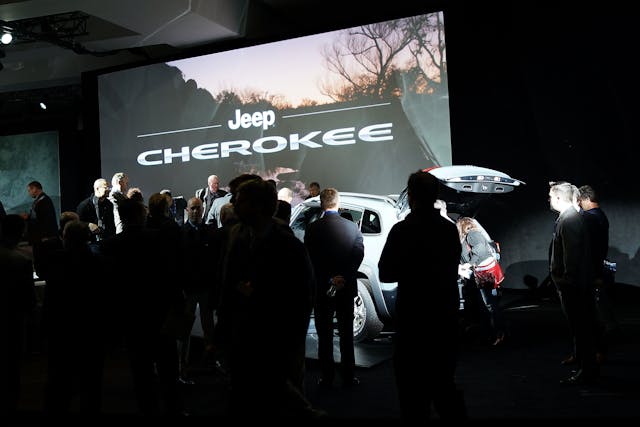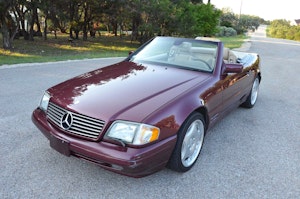Media | Articles
The controversy over Native American names engulfs the Jeep Cherokee
A helicopter and three Coast Guard cutters backed up the 35 federal marshals who swarmed Alcatraz Island on June 11, 1971, to end a 19-month occupation of the abandoned prison by Native American activists. An outgrowth of the 1960s civil rights movement as well as the general turmoil of the times, the Alcatraz occupation is today considered a cornerstone of a Native American awakening that included marches and mass protests in Washington, D.C., in 1972, at South Dakota’s Wounded Knee in 1973, and elsewhere throughout the 1970s.
Against that backdrop, American Motors launched the first Jeep Cherokee, basically a wagon version of the existing Gladiator pickup. At the debut in Burlington, Wisconsin, in August 1973, AMC president William Luneburg and CEO Roy Chapin Jr. presented the first truck off the line to John Crowe, principal chief of the Eastern Band of Cherokee Indians. In turn, Crowe and other tribal officials traded Luneburg and Chapin ceremonial headdresses. A pact was formed that, nearly 50 years later, has survived better than many of the failed treaties that litter America’s history.
Until this past February, when a prominent Cherokee chief issued a surprising statement to Car and Driver, urging Jeep to drop the tribe’s name from its vehicles. “I’m sure this comes from a place that is well intended, but it does not honor us by having our name plastered on the side of a car,” said Chuck Hoskin Jr., principal chief of the Oklahoma-based Cherokee Nation, one of three federally recognized Cherokee tribes. “I think we’re in a day and age in this country where it’s time for both corporations and team sports to retire the use of Native American names, images, and mascots from their products, team jerseys, and sports in general.”

Jeep produced 434,000 vehicles branded with the Cherokee name in 2019, making it essential to the portfolio and the corporation’s profitability. In 2013, when Jeep revived the Cherokee after an 11-year run with the Liberty, the tribe took no position on it. Hoskin’s statement rocked Jeep’s new parent company, Stellantis, as chipping the nameplate off the Cherokee and Grand Cherokee now would sink decades of brand heritage and marketing, forcing Jeep to start over with a new name in a crowded, noisy market.
Even so, Stellantis chief exec Carlos Tavares replied that the company was open to dropping the name. All parties have gone quiet now and the only statement we could obtain was from a Stellantis spokesman: “As you would expect, we have a respectful and direct dialogue with the leaders and members of the Cherokee community on this and on other important matters. These are discussions we value and are ongoing.”
Marketplace
Buy and sell classics with confidence
That the Cherokee was ensnared in the latter-day controversies over Native American names seems inevitable as pro and amateur sports teams face mounting pressure to change their mascots. The auto industry carries some baggage in this department, too, from the Dodge Dakota to Indian motorcycles to Winnebago’s extensive line of RVs. They are holdovers from a time when Native American names were freely used to connote agility, nobility, or battlefield prowess. There’s a reason the Army continues to call its helicopters the Apache, the Chinook, the Black Hawk, and the Lakota—apparently with tribal blessings.

To AMC’s credit, even the Cherokee’s earliest ads were limited to the truck’s selling points while avoiding racist tropes—unlike General Motors when it created a new division in 1926 named after “the greatest Indian chief who ever lived on the American continent.” For Pontiac’s launch party, GM rented New York’s Commodore Hotel and renamed it “The Wigwam,” inviting dealers to a “powwow” for “heap big eats.” Some dealers hired local Native Americans to dress up and hang out in tepees in their showrooms.
Was Pontiac exposing Americans— albeit in a narrow, crude way—to our Native heritage or just ripping off a culture for profit? Nearly a century later, as sensitivities change, it seems that people are still debating the question.













